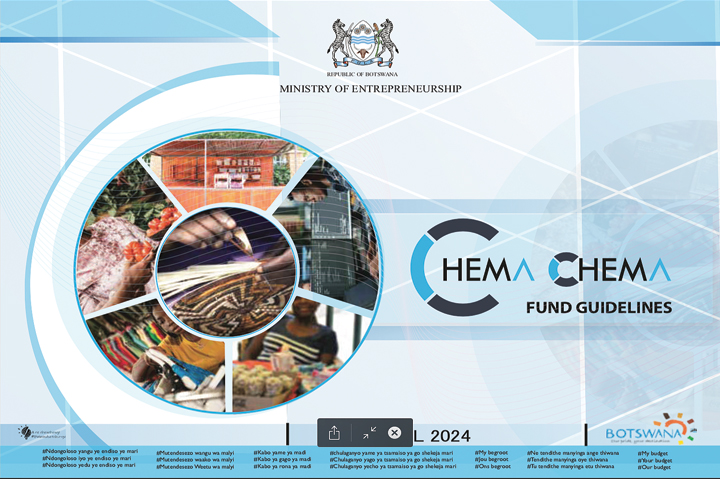Ramadi battle: Shia militias near IS-held Iraqi city
Image from a video released by the Amaq news agency purporting to show Ramadi after Islamic State took control
Shia militias are assembling east of the Iraqi city of Ramadi to prepare for a counter-attack against Islamic State militants who captured it on Sunday.
Iraqi state TV described tanks and other military vehicles entering al-Habbaniyah military camp. IS fighters are reportedly moving towards the base.
The Iraqi government called for help from the Iran-backed militias after the military was routed and fled.
About 500 people died in the city – only 70 miles (112km) west of Baghdad.
Shia forces at Habbaniya, about 20km (12 miles) from Ramadi, were "now on standby," the head of the Anbar provincial council, Sabah Karhout, was quoted by Reuters as saying.
In a statement, the council said about 3,000 Shia fighters had arrived in Anbar to take part in "the liberation of all Ramadi areas in which IS militants took positions".
But IS militants had also advanced from Ramadi to the outskirts of the town of al-Khalidiyah, near the Habbaniyah base, an IS statement and witnesses said.
The fall of Ramadi is a disaster for the Iraqi army and government, and especially its Prime Minister, Haider al-Abadi.
After the recapture of another provincial capital, Tikrit, at the end of March, he announced the start of a similar campaign to "liberate" Anbar province (the country's biggest) and flew to Ramadi to kick it off.
Now Ramadi has gone, and along with it the military command centre for the whole province. A few days before the final collapse on Sunday, Mr Abadi said he would not allow it to fall.
Now he and the largely Sunni provincial council have had to do what they didn't want – to call in the Iranian-backed Shia militias who were instrumental on the ground in recapturing Tikrit.
They will play the lead role if Ramadi is to be recaptured. Will the Americans bomb to support them, and help spread Iranian penetration and control in Iraq?
The US has said it is confident the capture of Ramadi can be reversed.
Speaking in South Korea, Secretary of State John Kerry said: "I am convinced that as the forces are redeployed and as the days flow in the weeks ahead, that's going to change."
The Shia militias, known as the Popular Mobilisation (Hashid Shaabi), were key to the recapture from IS of another city, Tikrit, north of Baghdad, in April.
But their use has raised concern in the US and elsewhere that it could provoke sectarian tension in Sunni areas such as Ramadi.
The militias pulled out of Tikrit following reports of widespread violence and looting.
In another move, the Iranian Defence Minister, Hossein Dehghan, has arrived in Baghdad on a visit arranged before the latest developments in Ramadi.
'Purged' city?
The police and military made a chaotic retreat from Ramadi, which has been contested for months, after days of intense fighting.
A statement purportedly from IS said its fighters had "purged the entire city". It said IS had taken the 8th Brigade army base, along with tanks and missile launchers left behind by troops.
An Iraqi army officer told the BBC that most troops had retreated to a military base in the city of Khalidiya, east of Ramadi, despite an order from Prime Minister Abadi for them to stand firm.
The US-led coalition says it has carried out 19 air strikes in Iraq since early on Sunday, including attacks around Ramadi.
However, they appear to have failed to hinder the IS advance there.
Reports said Iraqi forces had fled following a series of suicide car bomb attacks on Sunday.
Four almost simultaneous explosions hit police defending the Malaab district in southern Ramadi. Later, three more suicide bombers drove explosives-laden cars into the gate of the provincial military headquarters, the Anbar Operation Command, officials said.
Anbar province covers a vast stretch of the country west from Baghdad to the Syrian border, and contains key roads that link Iraq to both Syria and Jordan. Ramadi's loss is seen as a severe setback for the government.
IS reportedly controls more than half of Anbar's territory.
Some 8,000 people have been displaced by the latest bout of fighting in Ramadi, according to the International Organisation for Migration.
BBC
News
Nigerians, Zimbabweans apply for Chema Chema Fund

Fronting activities, where locals are used as a front for foreign-owned businesses, have been a long-standing issue in Botswana. These activities not only undermine the government’s efforts to promote local businesses but also deprive Batswana of opportunities for economic empowerment, officials say. The Ministry of Trade and Industry has warned of heavy penalties for those involved in fronting activities especially in relation to the latest popular government initiative dubbed Chema Chema.
According to the Ministry, the Industrial Development Act of 2019 clearly outlines the consequences of engaging in fronting activities. The fines of up to P50,000 for first-time offenders and P20,000 plus a two-year jail term for repeat offenders send a strong message that the government is serious about cracking down on this illegal practice. These penalties are meant to deter individuals from participating in fronting activities and to protect the integrity of local industries.
“It is disheartening to hear reports of collaboration between foreigners and locals to exploit government initiatives such as the Chema Chema Fund. This fund, administered by CEDA and LEA, is meant to support informal traders and low-income earners in Botswana. However, when fronting activities come into play, the intended beneficiaries are sidelined, and the funds are misused for personal gain.” It has been discovered that foreign nationals predominantly of Zimbabwean and Nigerian origin use unsuspecting Batswana to attempt to access the Chema Chema Fund. It is understood that they approach these Batswana under the guise of drafting business plans for them or simply coming up with ‘bankable business ideas that qualify for Chema Chema.’
Observers say the Chema Chema Fund has the potential to uplift the lives of many Batswana who are struggling to make ends meet. They argue that it is crucial that these funds are used for their intended purpose and not siphoned off through illegal activities such as fronting. The Ministry says the warning it issued serves as a reminder to all stakeholders involved in the administration of these funds to ensure transparency and accountability in their disbursement.
One local commentator said it is important to highlight the impact of fronting activities on the local economy and the livelihoods of Batswana. He said by using locals as a front for foreign-owned businesses, opportunities for local entrepreneurs are stifled, and the economic empowerment of Batswana is hindered. The Ministry’s warning of heavy penalties is a call to action for all stakeholders to work together to eliminate fronting activities and promote a level playing field for local businesses.
Meanwhile, the Ministry of Trade and Industry’s warning of heavy penalties for fronting activities is a necessary step to protect the integrity of local industries and promote economic empowerment for Batswana. “It is imperative that all stakeholders comply with regulations and work towards a transparent and accountable business environment. By upholding the law and cracking down on illegal activities, we can ensure a fair and prosperous future for all Batswana.”
News
Merck Foundation and African First Ladies mark World Health Day 2024

Merck Foundation, the philanthropic arm of Merck KGaA Germany marks “World Health Day” 2024 together with Africa’s First Ladies who are also Ambassadors of MerckFoundation “More Than a Mother” Campaign through their Scholarship and Capacity Building Program. Senator, Dr. Rasha Kelej, CEO of Merck Foundation emphasized, “At Merck Foundation, we mark World Health Day every single day of the year over the past 12 years, by building healthcare capacity and transforming patient care across Africa, Asia and beyond.
I am proud to share that Merck Foundation has provided over 1740 scholarships to aspiring young doctors from 52 countries, in 44 critical and underserved medical specialties such as Oncology, Diabetes, Preventative Cardiovascular Medicine, Endocrinology, Sexual and Reproductive Medicine, Acute Medicine, Respiratory Medicine, Embryology & Fertility specialty, Gastroenterology, Dermatology, Psychiatry, Emergency and Resuscitation Medicine, Critical Care, Pediatric Emergency Medicine, Neonatal Medicine, Advanced Surgical Practice, Pain Management, General Surgery, Clinical Microbiology and infectious diseases, Internal Medicine, Trauma & Orthopedics, Neurosurgery, Neurology, Cardiology, Stroke Medicine, Care of the Older Person, Family Medicine, Pediatrics and Child Health, Obesity & Weight Management, Women’s Health, Biotechnology in ART and many more”.
As per the available data, Africa has only 34.6% of the required doctors, nurses, and midwives. It is projected that by 2030, Africa would need additional 6.1 million doctors, nurses, and midwives*. “For Example, before the start of the Merck Foundation programs in 2012; there was not a single Oncologist, Fertility or Reproductive care specialists, Diabetologist, Respiratory or ICU specialist in many countries such as The Gambia, Liberia, Sierra Leone, Central African Republic, Guinea, Burundi, Niger, Chad, Ethiopia, Namibia among others. We are certainly creating historic legacy in Africa, and also beyond. Together with our partners like Africa’s First Ladies, Ministries of Health, Gender, Education and Communication, we are impacting the lives of people in the most disadvantaged communities in Africa and beyond.”, added Senator Dr. Kelej. Merck Foundation works closely with their Ambassadors, the African First Ladies and local partners such as; Ministries of Health, Education, Information & Communication, Gender, Academia, Research Institutions, Media and Art in building healthcare capacity and addressing health, social & economic challenges in developing countries and under-served communities. “I strongly believe that training healthcare providers and building professional healthcare capacity is the right strategy to improve access to equitable and quality at health care in Africa.
Therefore, I am happy to announce the Call for Applications for 2024 Scholarships for young doctors with special focus on female doctors for our online one-year diploma and two year master degree in 44 critical and underserved medical specialties, which includes both Online Diploma programs and On-Site Fellowship and clinical training programs. The applications are invited through the Office of our Ambassadors and long-term partners, The First Ladies of Africa and Ministry of Health of each country.” shared Dr . Kelej. “Our aim is to improve the overall health and wellbeing of people by building healthcare capacity across Africa, Asia and other developing countries. We are strongly committed to transforming patientcare landscape through our scholarships program”, concluded Senator Kelej.
News
Interpol fugitive escapes from Botswana

John Isaak Ndovi, a Tanzanian national embroiled in controversy and pursued under a red notice by the International Criminal Police Organization (Interpol), has mysteriously vanished, bypassing a scheduled bail hearing at the Extension 2 Magistrate Court in Gaborone. Previously apprehended by Botswana law enforcement at the Tlokweng border post several months earlier, his escape has ignited serious concerns.
Accused of pilfering assets worth in excess of P1 million, an amount translating to roughly 30,000 Omani Riyals, Ndovi has become a figure of paramount interest, especially to the authorities in the Sultanate of Oman, nestled in the far reaches of Asia.
The unsettling news of his disappearance surfaced following his failure to present himself at the Extension 2 Magistrate Court the preceding week. Speculation abounds that Ndovi may have sought refuge in South Africa in a bid to elude capture, prompting a widespread mobilization of law enforcement agencies to ascertain his current location.
In an official communiqué, Detective Senior Assistant Police Commissioner Selebatso Mokgosi of Interpol Gaborone disclosed Ndovi’s apprehension last September at the Tlokweng border, a capture made possible through the vigilant issuance of the Interpol red notice.
At 36, Ndovi is implicated in a case of alleged home invasion in Oman. Despite the non-existence of an extradition treaty between Botswana and Oman, Nomsa Moatswi, the Director of the Directorate of Public Prosecution (DPP), emphasized that the lack of formal extradition agreements does not hinder her office’s ability to entertain extradition requests. She highlighted the adoption of international cooperation norms, advocating for collaboration through the lenses of international comity and reciprocity.
Moatswi disclosed the intensified effort by law enforcement to locate Ndovi following his no-show in court, and pointed to Botswana’s track record of extraditing two international fugitives from France and Zimbabwe in the previous year as evidence of the country’s relentless pursuit of legal integrity.
When probed about the potential implications of Ndovi’s case on Botswana’s forthcoming evaluation by the Financial Action Task Force (FATF), Moatswi reserved her speculations. She acknowledged the criticality of steering clear of blacklisting, suggesting that this singular case is unlikely to feature prominently in the FATF’s assessment criteria.

